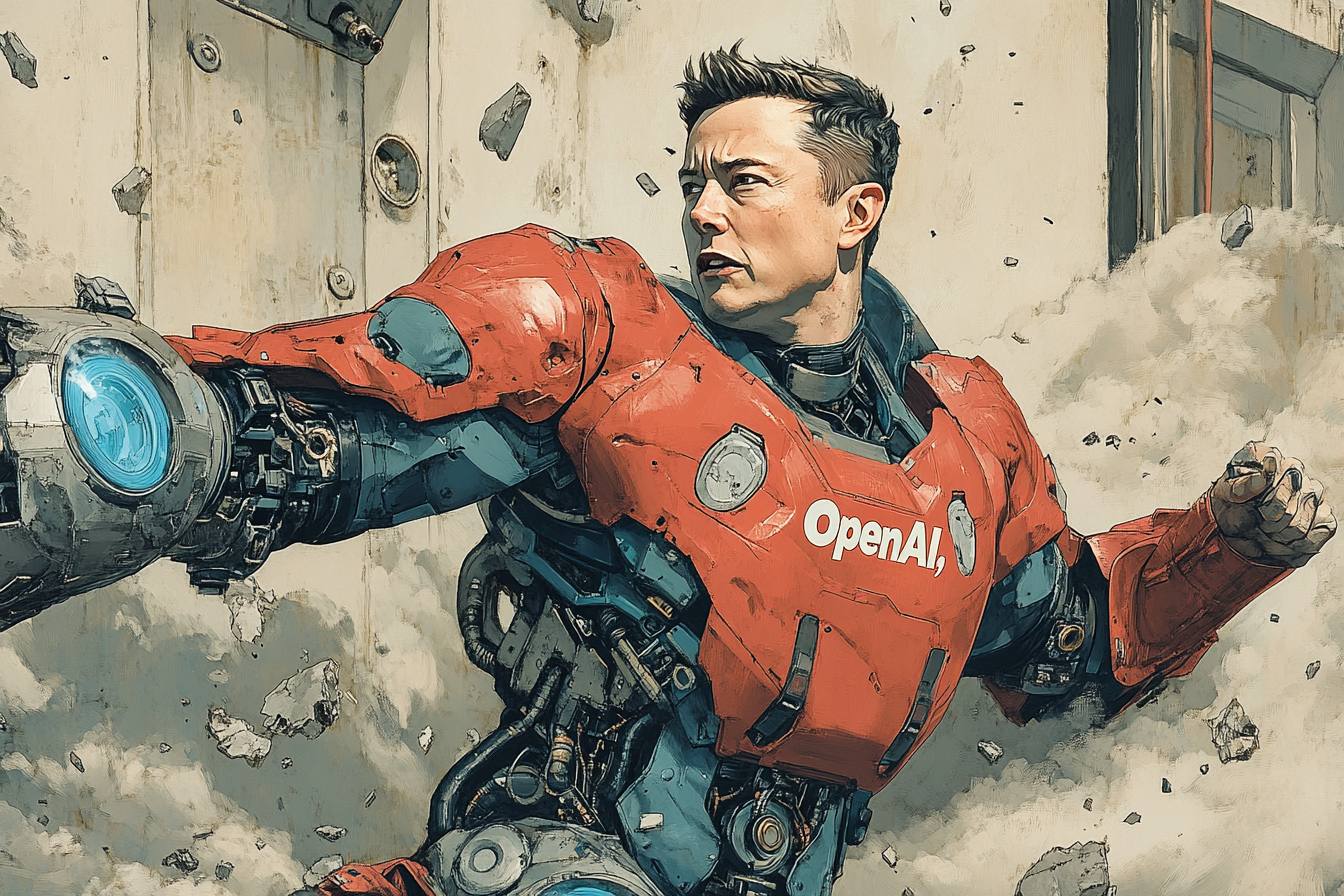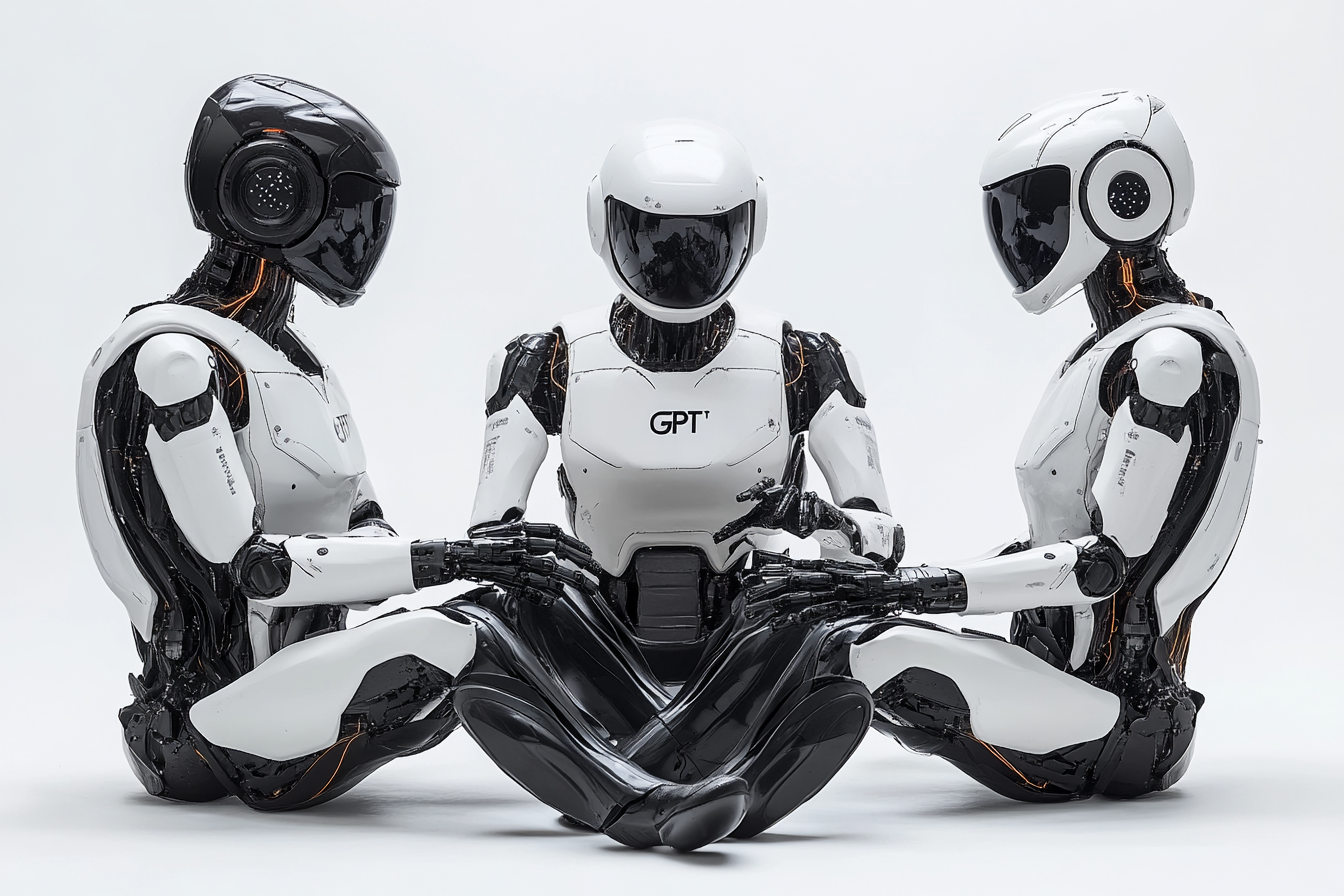“What a Liar!” – Musk Slams Altman’s OpenAI Equity Grab
OpenAI, the organization behind groundbreaking AI technologies like ChatGPT, DALL-E, and Sora, has undergone a remarkable and often contentious transformation.
Initially established as a non-profit with a mission to benefit humanity, OpenAI has evolved into a for-profit entity, attracting billions in investment and sparking debates about its direction, leadership, and the future of artificial intelligence.
This article delves into the key moments of OpenAI’s journey, exploring the roles of CEO Sam Altman and Elon Musk, and examining the controversies and intriguing developments that have shaped its path.
Listen to Podcast
OpenAI’s Non-Profit Beginnings
OpenAI was founded in December 2015 with the ambitious goal of ensuring that artificial general intelligence (AGI) – highly autonomous systems that surpass human capabilities – benefits all of humanity.
A group of prominent figures, including Elon Musk, Sam Altman, Ilya Sutskever, and Greg Brockman, came together with a vision of developing AGI safely and responsibly. They pledged a total of $1 billion in capital, though the actual amount collected by 2019 reached $130 million.
OpenAI initially operated as a non-profit research company, encouraging its researchers to publish their work openly and collaborate freely.
The organization aimed to create value for everyone, not just shareholders. Its charter emphasized the importance of broadly distributing the benefits of AGI and preventing its use in ways that could harm humanity or concentrate power.
Share This Post
The Shift to For-Profit
However, the pursuit of AGI proved to be more resource-intensive than initially anticipated. OpenAI’s founders had initially planned to raise $100 million, but Elon Musk suggested announcing a $1 billion funding commitment to avoid “sounding hopeless.”
By early 2017, the organization realized that it needed billions of dollars to finance the computing power required for AGI development.
This realization led to discussions about a new structure that could attract the necessary capital. In 2019, OpenAI announced its “capped-profit” structure, creating a for-profit arm alongside the original non-profit. This hybrid model aimed to balance the need for funding with its commitment to its mission.
The “capped-profit” structure was designed to “balance shareholder interests, stakeholder interests, and a public benefit interest” in its decision-making. It allowed OpenAI to raise capital with conventional terms while ensuring that the non-profit arm remained well-resourced. A key aspect of this structure was a cap on the returns investors could receive, with any excess profits flowing back to the non-profit.
This transition coincided with a strategic partnership with Microsoft.
Microsoft invested in OpenAI and became its preferred partner for commercializing new technologies, providing OpenAI with crucial funding and access to Microsoft’s Azure cloud computing platform.
Sam Altman’s Role in OpenAI’s Evolution
Sam Altman, a prominent entrepreneur and investor, has been a central figure in OpenAI’s journey. Initially a co-founder, he assumed the role of CEO in 2019. Altman has been a vocal advocate for responsible AI development, emphasizing the need for safety and ethical considerations. In a statement to Congress, he said, “we believe that we can and must work together to identify and manage the potential downsides so that we can all enjoy the tremendous upsides.”
Despite leading a company valued at $157 billion, Altman’s 2023 salary was a modest $76,001, just enough to cover health insurance. He has stated that he does not hold equity in OpenAI, though reports suggest the company has considered offering him shares as part of a potential transition to a full for-profit entity.
Altman’s leadership has not been without controversy.
In November 2023, he was briefly ousted by OpenAI’s board, reportedly due to concerns about his communication. This move triggered a dramatic response, with employees threatening mass resignations and Microsoft expressing its disapproval.
Ultimately, Altman was reinstated as CEO, highlighting his importance to the organization and the broader AI community.
Elon Musk’s Evolving Stance and Criticism of Altman
Elon Musk, another co-founder of OpenAI, has had a more complex relationship with the organization. Initially a strong supporter, he pledged significant funding and played an active role in its early years. However, in early 2018, Musk proposed taking control of OpenAI because he believed it was falling behind Google. When this proposal was rejected, he walked away from the company and withdrew a planned donation. He officially departed from OpenAI in 2018, citing potential conflicts of interest with Tesla’s AI development.
Musk has since become critical of OpenAI’s direction, particularly its transition to a for-profit model.
He has argued that the organization has strayed from its original mission of prioritizing public benefit. In late February 2024, Musk sued OpenAI, alleging they broke the company’s founding agreement by giving priority to profit over benefit to humanity. He has also stated that OpenAI was on a path to “certain failure” unless it merged with Tesla or he gained full control. During discussions about the for-profit structure, Musk withheld funding, and Reid Hoffman had to step in to cover expenses.
Musk’s criticism of Altman escalated in response to reports of OpenAI considering a new equity structure that could grant Altman a 7% stake in the company, potentially worth $10 billion. Musk took to social media, calling Altman a “liar” and pointing to Altman’s previous testimony to Congress where he stated he wouldn’t seek financial gain from OpenAI. This public clash highlights the tension between OpenAI’s for-profit ambitions and its non-profit origins.
It’s ironic that Musk criticizes OpenAI’s for-profit transition, given that he himself pushed for a for-profit structure in 2017 when he demanded majority equity and control of OpenAI. When his demands were rejected, he walked away, predicted OpenAI’s failure, and later founded his own AI company.
Controversies and Criticisms
OpenAI’s transition to a for-profit structure has generated considerable controversy. Critics argue that this shift prioritizes financial gain over the organization’s original mission of ensuring AGI benefits all of humanity. Concerns have been raised about the potential for profit-driven motives to compromise safety and ethical considerations in AI development.
- Encode’s Legal Challenge: Encode, an organization dedicated to promoting AI safety, filed a legal brief opposing OpenAI’s restructuring. They argue that the transition could lead to decisions that jeopardize the public good, as profit-driven motives often conflict with the ethical considerations required to develop safe and beneficial AI.
- Profit vs. Safety: The potential conflict between OpenAI’s profit motive and its mission to ensure AGI benefits all of humanity is a significant concern. Critics argue that the capped-profit model, while intended to limit investor returns, still creates an incentive to prioritize profit maximization, potentially at the expense of safety and ethical considerations.
- Governance Concerns: Some question whether OpenAI’s governance structure, with a non-profit board overseeing a for-profit entity, can effectively balance these competing interests. This structure has been criticized for potentially hindering the board’s ability to ensure that the company’s public good mission remains primary.
Altman’s leadership has also faced scrutiny.
- Altman’s Motives: Some question his commitment to OpenAI’s mission, given his background in venture capital and his focus on attracting investment.
- Communication and Leadership Style: Others criticize his communication style and his handling of internal conflicts, as evidenced by the events surrounding his brief ouster in 2023. This incident highlighted the importance of clear and transparent communication in leadership and the impact of leadership decisions on employee morale and organizational integrity.
Financial Performance and Outlook
Despite its massive valuation and significant investment, OpenAI’s financial performance presents a complex picture.
OpenAI’s for-profit arm raised $6.6 billion in October 2024, taking its valuation to $157 billion. However, the company is projected to incur a substantial $5 billion loss in 2024, compared to $3.7 billion in revenue. This raises questions about the long-term sustainability of its business model and its ability to balance its ambitious research goals with financial realities.
OpenAI’s financial projections indicate continued losses in the coming years, with some estimates suggesting it could be losing $14 billion per year by 2026. This raises concerns about the company’s reliance on external funding and the potential for investor pressure to prioritize profitability over its mission.
It’s worth noting that OpenAI’s non-profit arm ended 2023 with net assets worth $21 million. Additionally, the organization has expanded its charitable giving beyond universal basic income projects linked to Sam Altman.
Interesting Developments and Anecdotes
OpenAI’s journey has been marked by several intriguing developments and anecdotes:
- Dactyl: In 2018, OpenAI researchers developed Dactyl, a robotic hand that could manipulate objects with remarkable dexterity using reinforcement learning. This breakthrough demonstrated the potential of AI in robotics and fine motor control tasks.
- OpenAI Five: OpenAI also created OpenAI Five, an AI system that achieved impressive success in playing the complex video game Dota 2. This showcased the capabilities of AI in strategic thinking and teamwork.
- Sam Altman’s “Nuclear Backpack”: Altman has been seen carrying a blue backpack rumored to contain tools for shutting down OpenAI in case of an AI-related emergency. This highlights the organization’s awareness of the potential risks associated with advanced AI.
- Elon Musk’s Early Vision: In the early days of OpenAI, Musk envisioned a much larger initial funding commitment of $1 billion. However, the actual amount raised was significantly less, contributing to the later decision to transition to a for-profit structure.
Conclusion: Navigating the Future of AI
OpenAI’s transformation from a non-profit to a for-profit organization reflects the evolving landscape of AI research and development. The organization’s pursuit of AGI requires significant resources, leading to difficult choices about funding, structure, and priorities.
While OpenAI has achieved remarkable breakthroughs in AI, its journey has been marked by controversies and criticisms. Concerns remain about the potential for profit-driven motives to compromise safety, ethics, and the organization’s original mission.
The roles of Sam Altman and Elon Musk have been central to OpenAI’s story. Altman’s leadership, while sometimes controversial, has driven the organization’s growth and innovation. Musk’s evolving stance, from co-founder to critic, reflects the complex challenges and ethical considerations surrounding AI development.
OpenAI’s transition also has broader implications for the AI industry. It highlights the increasing commercialization of AI and the potential for a “race to the bottom” where safety and ethical considerations take a backseat to profit maximization. This underscores the need for regulatory oversight and responsible leadership in AI development.
As OpenAI continues to push the boundaries of AI, it faces the ongoing challenge of balancing its ambitious research goals with its financial performance and its commitment to ensuring AGI benefits all of humanity. The organization’s future trajectory will undoubtedly shape the development and deployment of AI, with implications for society, the economy, and the future of technology.











